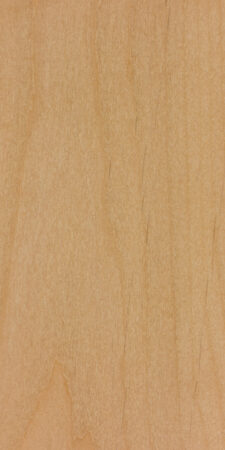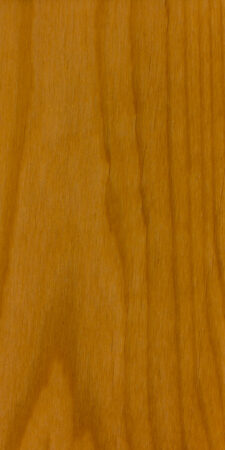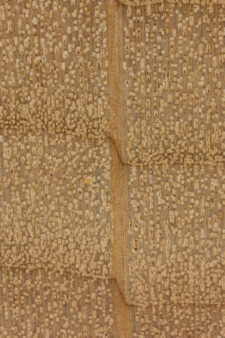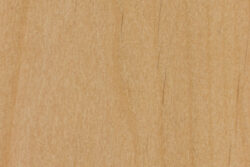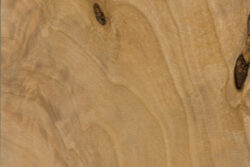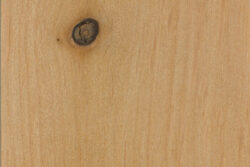Common Name(s): Andean alder
Scientific Name: Alnus acuminata
Distribution: Found at higher elevations Central and South America
Tree Size: 65-82 ft (20-25 m) tall,
2-3 ft (.6-1 m) trunk diameter
Average Dried Weight: 24.0 lbs/ft3 (385 kg/m3)
Specific Gravity (Basic, 12% MC): .38, .39
Janka Hardness: 430 lbf (1,910 N)
Modulus of Rupture: 7,430 lbf/in2 (51.2 MPa)
Elastic Modulus: 1,133,000 lbf/in2 (7.81 GPa)
Crushing Strength: 4,210 lbf/in2 (29.0 MPa)
Shrinkage: Radial: 3.5%, Tangential: 6.8%,
Volumetric: 11.2%, T/R Ratio: 1.9
Color/Appearance: Andean alder tends to be light tan to reddish brown; color darkens and reddens with age. There is no visible distinction between heartwood and sapwood. Large aggregate rays appear as occasional small streaks on the face grain that can be mistaken for defects in the wood.
Grain/Texture: Grain is generally straight, with a moderately fine, uniform texture.
Rot Resistance: Andean alder is rated non-durable to perishable regarding decay resistance.
Workability: Andean alder is very easy to work with both hand and machine tools; it sands especially easy. The wood is rather soft, however, and care must be taken to avoid denting it in some applications. Turns, glues, and finishes well.
Odor: No characteristic odor.
Allergies/Toxicity: Although severe reactions are quite uncommon, species in the Alnus genus have been reported to cause eye, skin, and respiratory irritation. See the articles Wood Allergies and Toxicity and Wood Dust Safety for more information.
Pricing/Availability: No data available.
Sustainability: This wood species is not listed in the CITES Appendices, and is reported by the IUCN as being a species of least concern.
Common Uses: General construction, furniture, cabinetry, millwork, pallets, match sticks, and carving.
Comments: Andean alder is a fast-growing tree that’s sometimes grown on plantations. The wood is quite soft, but is still acceptably strong for light construction and utility purposes.
This species was formerly thought to be only a subspecies of Mexican alder (Alnus jorullensis)—the two trees yield very comparable lumber. Andean alder one of the only Alnus species that’s found in the Southern Hemisphere (most notably, as the common name suggests, in the Andes Mountains).
Images: Drag the slider up/down to toggle between raw and finished wood. There are currently no pictures of this exact wood species, but a similar species within the Alnus genus is being substituted red alder (A. rubra). If you’d like to contribute a wood sample for this webpage, please see the contact form for donating wood samples.
Identification: See the article on Hardwood Anatomy for definitions of endgrain features.
Porosity: diffuse porous
Arrangement: mainly radial multiples of two to four pores
Vessels: medium, numerous
Parenchyma: generally not visible
Rays: both narrow and very wide aggregate rays present; wide spacing
Lookalikes/Substitutes: The wood of black cherry (Prunus serotina) bears a superficial resemblance to Andean alder, and also has a slightly overlapping range extending down to southern Mexico. However, black cherry will lack aggregate rays and have a semi-ring-porous pore arrangement with gradually decreasing pore size in the latewood sections.
Notes: The endgrain images are from the related Alnus rubra. The images are meant to give a general sense of the species’ anatomy, but it may not be a completely accurate representation of the intended species. Particularly, A. rubra tends to have more extensive parenchyma that’s diffuse-in-aggregates, while A. jorullensis usually lacks visible parenchyma.
Related Content:

